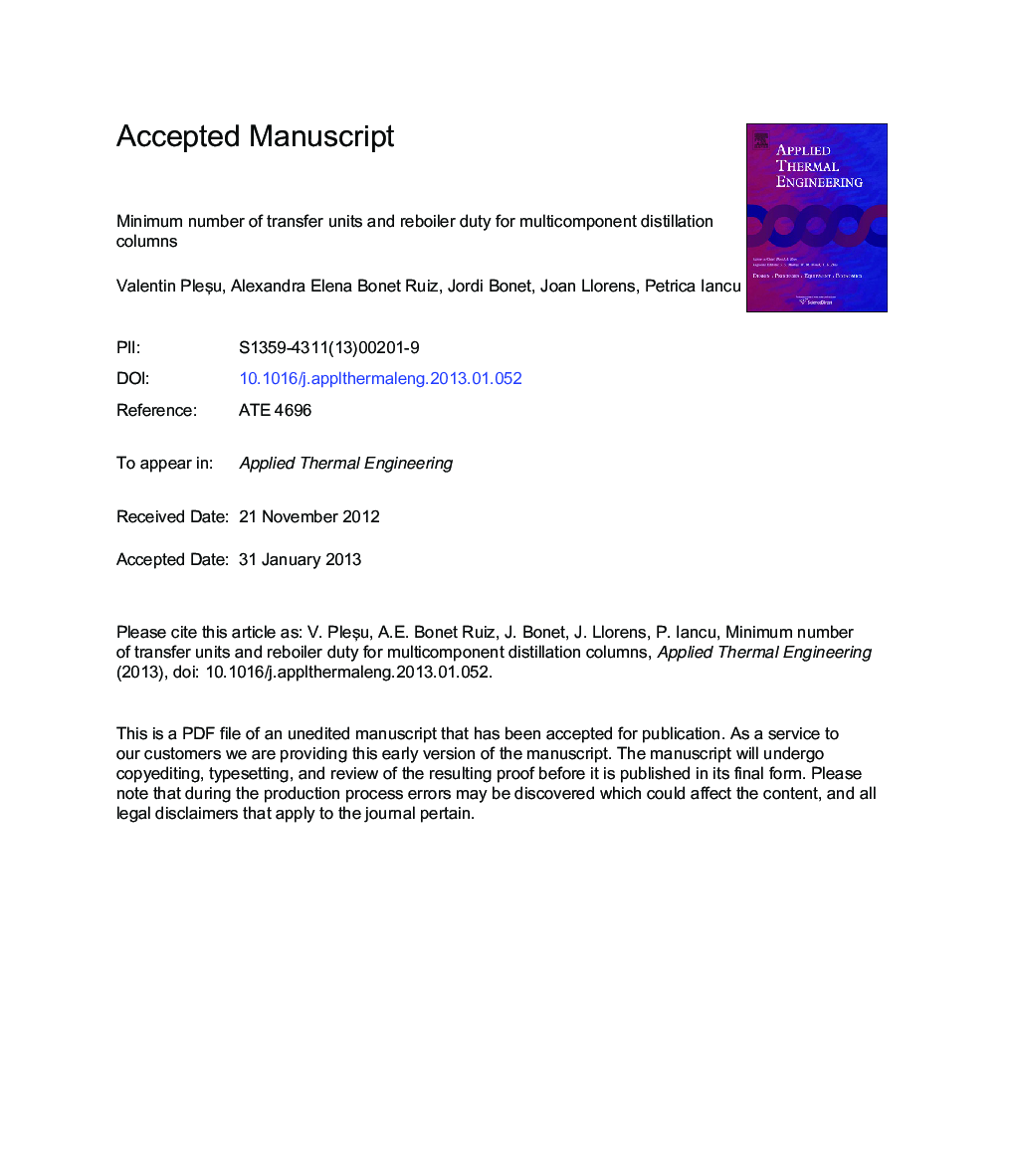| Article ID | Journal | Published Year | Pages | File Type |
|---|---|---|---|---|
| 646541 | Applied Thermal Engineering | 2013 | 62 Pages |
Abstract
Some guidelines to evaluate distillation columns, considering only basic thermodynamic data and principles, are provided in this paper. The method allows a first insight to the problem by simple calculations, without requiring column variables to ensure rational use of energy and low environmental impact. The separation system is approached by two complementary ways: minimum and infinite reflux flow rate. The minimum reflux provides the minimum energy requirements, and the infinite reflux provides the feasibility conditions. The difficulty of separation can be expressed in terms of number of transfer units (NTU). The applicability of the method is not mathematically limited by the number of components in the mixture. It is also applicable to reactive distillation. Several mixtures, including reactive distillation, are rigorously simulated as illustrative examples, to verify the applicability of the approach. The separation of the mixtures, performed by distillation columns, is feasible if a minimum NTU can be calculated between the distillate and bottom products. Once verified the feasibility of the separation, the maximum thermal efficiency depends only on boiling point of bottom and distillate streams. The minimum energy requirements corresponding to the reboiler can be calculated from the maximum thermal efficiency, and the variation of entropy and enthalpy of mixing between distillate and bottom streams.
Related Topics
Physical Sciences and Engineering
Chemical Engineering
Fluid Flow and Transfer Processes
Authors
Valentin PleÅu, Alexandra Elena Bonet Ruiz, Jordi Bonet, Joan Llorens, Petrica Iancu,
